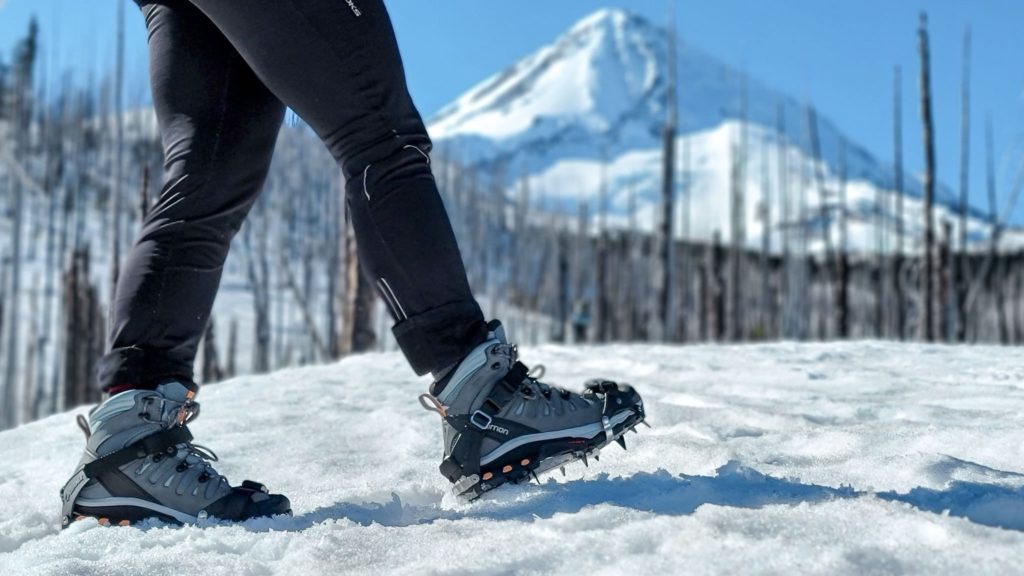To ensure a safe and effective experience, we will also discuss mastering the walking technique with crampons, addressing aspects such as foot placement, weight distribution, and maintaining proper body posture and balance. Additionally, we will provide safety tips, emphasizing the importance of practicing in controlled environments and being aware of potential hazards.
Throughout the article, we will share practical advice, troubleshoot common mistakes, and provide insights on additional safety equipment, such as ice axes. By the end, you will have a comprehensive understanding of walking in crampons, empowering you to tackle icy terrain with confidence.
So, let’s lace up our boots and dive into the world of winter skills: walking in crampons for secure traction on icy terrain.
FAQ
1. What type of crampons should I choose for hiking?
For hiking, it is recommended to select strap-on crampons. These are easier to attach and adjust, making them suitable for various terrains and boot types. They provide adequate traction for most hiking adventures on icy terrain.
2. Can I use the same crampons for mountaineering?
While strap-on crampons can be used for mountaineering in less technical terrains, it is advisable to choose hybrid or step-in crampons for more challenging mountaineering expeditions. These types offer greater stability and compatibility with technical mountaineering boots.
3. What are anti-balling plates, and why are they important in crampons?
Anti-balling plates are essential features found on crampons that prevent snow from accumulating and forming snowballs under your boots. They improve traction and prevent accidents caused by losing contact with the ground due to accumulated snow.
4. Can I use any type of boots with crampons?
No, it is crucial to select boots compatible with crampons to ensure safety and effectiveness. Rigid boots are commonly used with step-in crampons for mountaineering, while semi-rigid and flexible boots are suitable for strap-on and hybrid crampons used in hiking and less technical terrains.
5. How should I adjust my boots to ensure crampon compatibility?
To ensure crampon compatibility, it is important to properly fit and adjust your boots. Tighten the laces firmly without cutting off circulation. Adjust the boot’s stiffness settings if available. Verify that the crampon attachment points align with the boot’s welts, ensuring a secure fit for safe and efficient walking in crampons.

